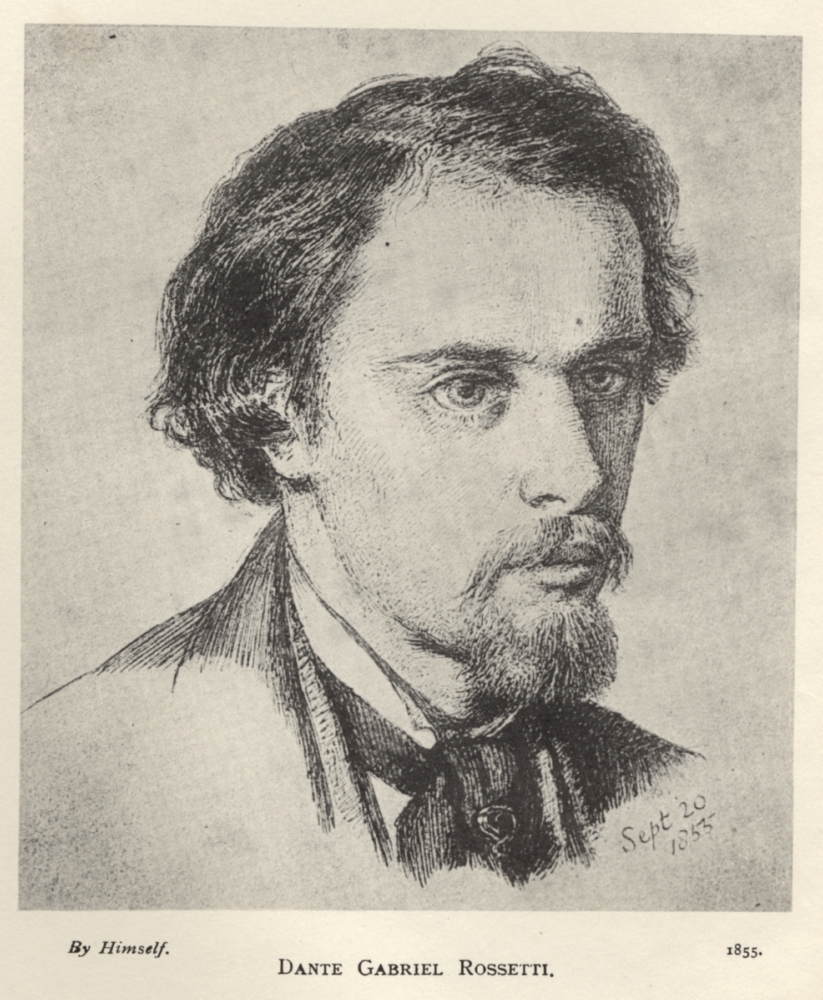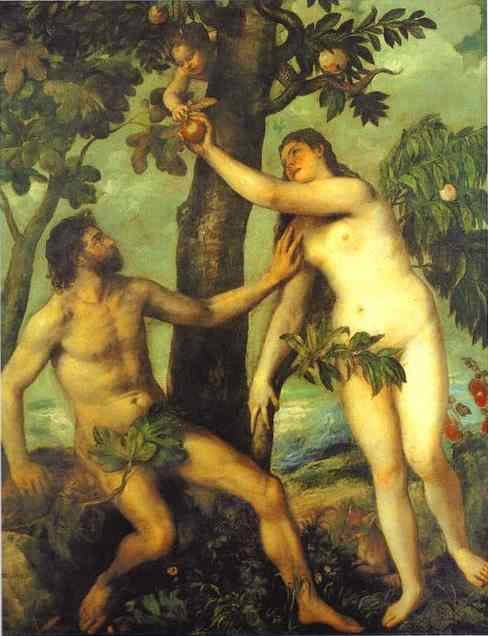Female Representation in 'Body's Beauty' & 'Lady Lilith'
Emily Brac & Katie Murray
1351
|
Rossetti also uses his poem to address the potentially negative aspects of women that society tends to repress. Lady Lilith is presented as a temptress. And, subtly of herself contemplative, Draws men to watch the bright net she can weave, Till heart and body and life are in its hold@Rossetti, Dante Gabriel. "Body’s Beauty." ENG 633: 19th Century Literature and Culture II Course Reader, First Edition. Lorraine Janzen (Toronto: Ryerson University, 2011).
Although society would prefer not to acknowledge this kind of behaviour, Rossetti was merely exploring the varying dynamics of relations between a man and a woman. For Rossetti, the great affections between one another, determined by that “material loveliness”, formed the undeniable reality in things@Pater, Walter. “Dante Gabriel Rossetti.” Appreciations, with an Essay on Style. Edinburgh: MacMillan and Co., 1889.. By portraying Lady Lilith as temptress, weaving her web to ensnare men, he was only trying to encompass the complexity of characteristics that any given woman was capable of. This indeed embodies the empowerment of women, and potentially the doomed nature of any man who dares come her way. It is Lilith’s self-interest that weaves this dangerous net and leaves only the abyss for men to fall into once they become fascinated by her@Miller, J. Hillis. "The Mirror’s Secret: Dante Gabriel Rossetti’s Double Work of Art." Victorian Poetry 29.4 (1991): 333-349. 6 Feb. 2011 <http://www.jstor.org.ezproxy.lib.ryerson.ca/stable/40003000>.. It was not Rossetti’s intention to come across critical of women. Rather, he meant to explore what had inspired him to write. Rossetti was writing about the ideal intensity of love, a love based upon a “perfect yet peculiar” type of physical or material beauty@Pater, Walter. “Dante Gabriel Rossetti.” Appreciations, with an Essay on Style. Edinburgh: MacMillan and Co., 1889.. It is the notion of physical beauty that stands out in Body’s Beauty, as in the title of the poem alone, as it is Lady Lilith’s beauty that ensnares these men. The very same physical beauty that the average nineteenth-century woman, if she is meant to be considered proper by society’s standards, ought to repress.
|
While Lady Lillith is seen as a vixen, she is a also a
representation of women's freedom because she is not presenting herself to
anyone and just admiring herself. As a temptress, she went against all moral
codes, giving off negative female connotations.
In the background, the subject is surrounded by a multitude of symbols. Roses and poppies are around her, reminding the audience of both life and death. The garden behind her in the window could be interpreted as the Garden of Eden that she ran away from when she was expected to submit to her husband Adam. The fact that the candles reflect in the window, making the audience unsure of whether it is a window or mirror, correlating with the life and death flowers@ “A Dialectic of Beauty in Rossetti's "Lady Lilith." The Victorian Web. 1 February 2011. http://www.victorianweb.org/painting/dgr/paintings/byecroft4.html.
In the background, the subject is surrounded by a multitude of symbols. Roses and poppies are around her, reminding the audience of both life and death. The garden behind her in the window could be interpreted as the Garden of Eden that she ran away from when she was expected to submit to her husband Adam. The fact that the candles reflect in the window, making the audience unsure of whether it is a window or mirror, correlating with the life and death flowers@ “A Dialectic of Beauty in Rossetti's "Lady Lilith." The Victorian Web. 1 February 2011. http://www.victorianweb.org/painting/dgr/paintings/byecroft4.html.

Adam and Eve
|
As all students in the Royal Academy Schools, Rossetti was exposed to the Bible for the purpose of inspiration, as is reflected in many of his literary works@Ormond, Leonee. “Dante Gabriel Rossetti and the Old Masters”. The Yearbook of English Studies 36.2 (2006): 153-168. 6 Feb. 2011 < http://www.jstor.org.ezproxy.lib.ryerson.ca/stable/20479249>.. In the very first lines of the poem Lady Lilith is referred to as the witch that Adam loved before the “gift of Eve”@Rossetti, Dante Gabriel. "Body’s Beauty." ENG 633: 19th Century Literature and Culture II Course Reader, First Edition. Lorraine Janzen (Toronto: Ryerson University, 2011).. As it is commonly known in the Biblical story of Adam and Eve, Eve eats the forbidden apple and dooms mankind to pay for her sin. To refer to Eve as a “gift” and Lady Lilith as a “witch” makes a bold statement towards Lady Lilith’s character. Rossetti used a female Biblical character that could be seen as both innocent, as she is deceived by the snake, and sinful, as she eats the forbidden fruit despite being warned not to. Rossetti is again portraying the complex levels of the female psyche that is not reflected upon in society’s view of the proper nineteenth-century woman. Lo! as that youth's eyes burned at thine, so went Thy spell through him, and left his straight neck bent, And round his heart one strangling golden hair.@Rossetti, Dante Gabriel. "Body’s Beauty." ENG 633: 19th Century Literature and Culture II Course Reader, First Edition. Lorraine Janzen (Toronto: Ryerson University, 2011).
Rossetti also aimed to incorporate varying types of imagery in his work as “aesthetic poetry is emblematic”, what is portrayed as natural, human and spiritual all at once@Miller, J. Hillis. “The Mirror’s Secret: Dante Gabriel Rossetti’s Double Work of Art.” Victorian Poetry 29.4 (1991): 333-349. 6 Feb. 2011 <http://www.jstor.org.ezproxy.lib.ryerson.ca/stable/40003000>.. These religious undertones, through the use of Eve, provide the reader with imagery that can be used to interpret Lady Lilith’s actions and raise questions about her true nature. Whether that is a cold and heartless temptress, or a misunderstood and lonely woman constantly pursued by men who are only interested in her looks.
|
Body’s Beauty and the painting Lady Lillith are companion
works of art that also include Soul’s
Beauty and Sibylla Palmifera as the perfect juxtaposing poem and painting@Rossetti, Dante Gabriel. "Body’s Beauty."
ENG 633: 19th Century Literature and Culture II Course Reader, First Edition.
Lorraine Janzen (Toronto: Ryerson University, 2011)..
Where Lady Lillith flaunts her skin, breasts and hair, Sibylla Palmifera’s head
s covered and she is dressed in a very modest dark red rob. She is showing very
little skin yet has the same facial expression as Lady Lillith. Both women look
unphased and a little bit stern, Where Lillith is holding a mirror and wrapped
up in looking at herself, Sibylla Palmifera is looking directly forward towards
the audience with a fountain pen in her hand. The same flowers of roses and
poppies are present behind the model as is the symbolism of life and death in
the smoking pot and and pot full of fire on either side of her@
Rossetti, Dante. Sibylla Palmifera. Lady Lever Art
Gallery, Port Sunlight, United Kingdom..
While Sibylla Palmifera is the ideal woman and wife, Lady
Lillith is the more free of the two woman. Although Lillth can be seen as
confined by her vanity, she is also set free by it. Sibylla on the other hand
has nothing to set her free from the confines of the female stereotypes and expectations.
Dante Gabrielle Rossettie created Body’s Beauty and Lady Lillith as works of art, but also as critiques of the society he was living in. He showed this by also painting Sibylla Palmifera and writing the corresponding poem Soul’s Beauty to enhance the social meaning of his artwork. Body’s Beauty and Lady Lilith challenge the societal norms and expectations of women in the nineteenth-century. Rossetti does this by depicting a woman putting herself and her own needs before that of any man, by addressing the potentially negative aspects of women that society tends to repress, and by using religious tones for the use of comparison. Rossetti’s purpose in all this was to portray women as they truly are, which is much more complex than nineteenth-century society allowed them to be.
Dante Gabrielle Rossettie created Body’s Beauty and Lady Lillith as works of art, but also as critiques of the society he was living in. He showed this by also painting Sibylla Palmifera and writing the corresponding poem Soul’s Beauty to enhance the social meaning of his artwork. Body’s Beauty and Lady Lilith challenge the societal norms and expectations of women in the nineteenth-century. Rossetti does this by depicting a woman putting herself and her own needs before that of any man, by addressing the potentially negative aspects of women that society tends to repress, and by using religious tones for the use of comparison. Rossetti’s purpose in all this was to portray women as they truly are, which is much more complex than nineteenth-century society allowed them to be.


